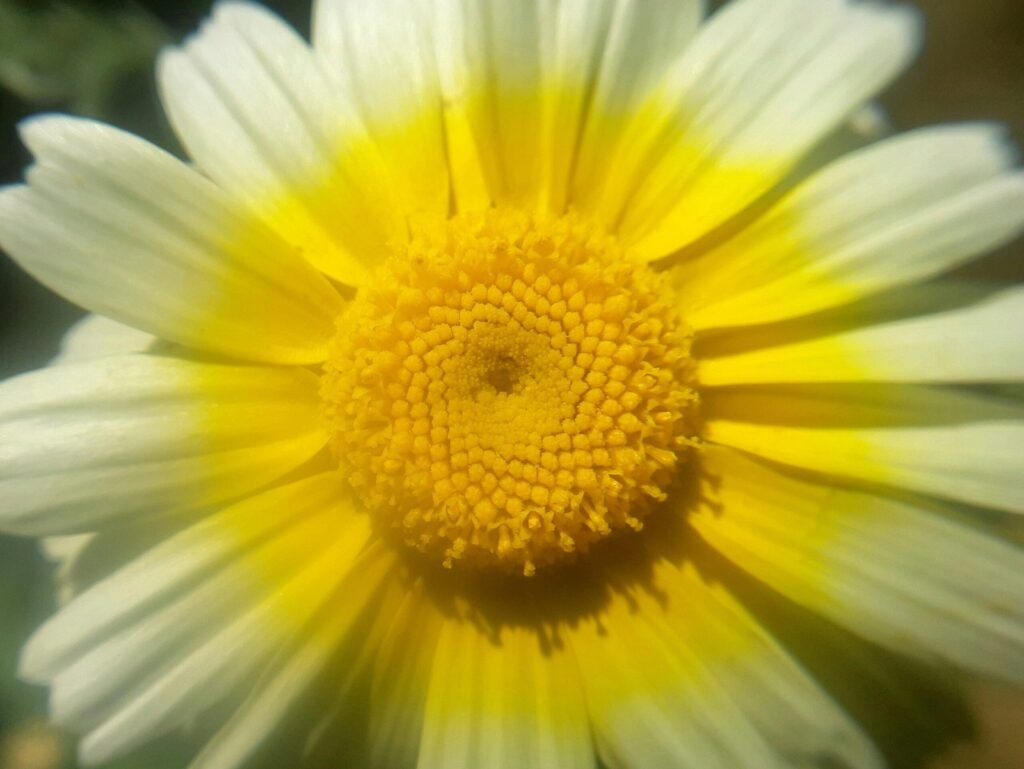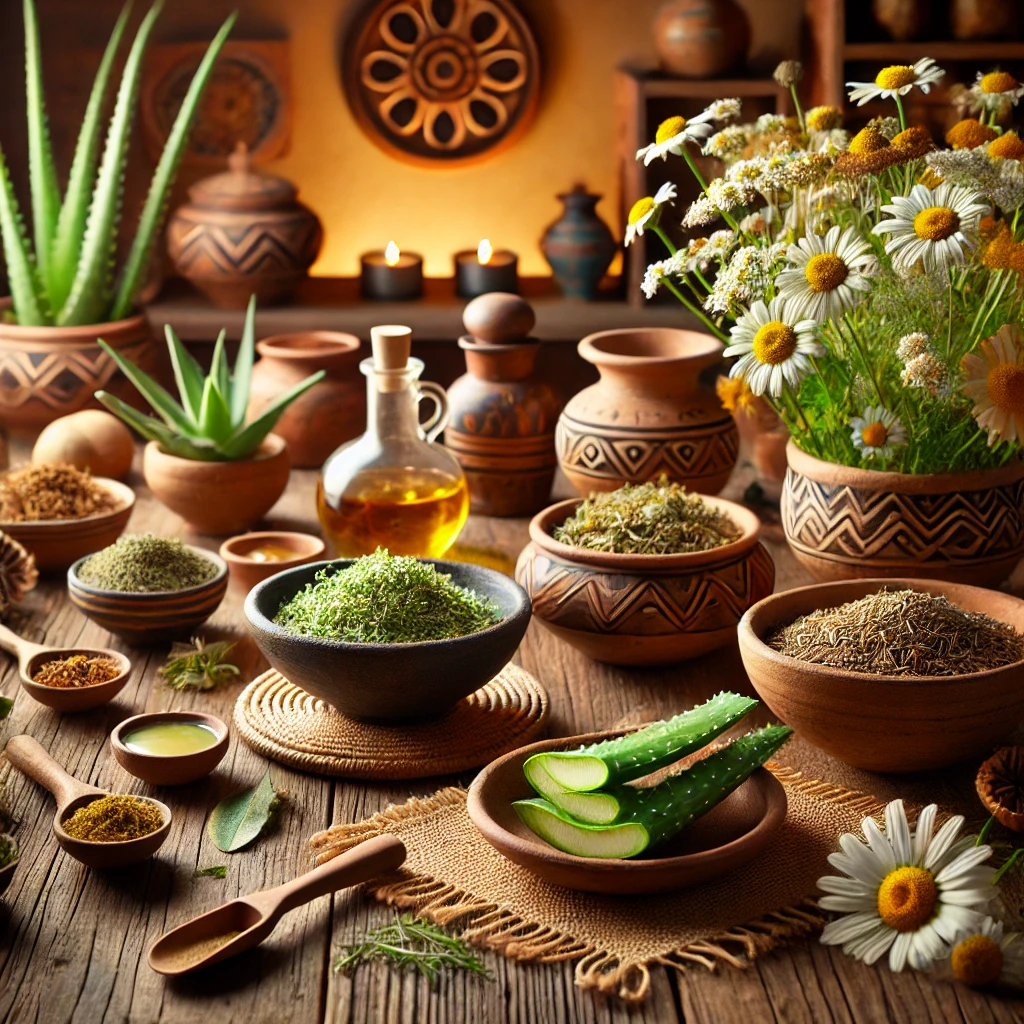Table of Contents
Introduction to Traditional Mexican Herbal Remedies
Traditional Mexican herbal remedies are an integral part of the country’s rich cultural tapestry, deeply rooted in the practices of indigenous communities and shaped by centuries of historical developments. These natural remedies have been in use for thousands of years, providing solutions to various ailments and promoting overall health and well-being. The reliance on herbal medicine reflects a profound respect for nature, where numerous plants, herbs, and flowers are utilized for their medicinal properties.
The historical significance of these remedies can be traced back to pre-Columbian civilizations, where various tribes relied on local flora to treat ailments and maintain wellness. For example, many indigenous groups, such as the Aztecs and Mayans, developed extensive knowledge systems regarding the medicinal qualities of plants available in their environment. This wisdom was often shared orally and through apprenticeships and has been passed down through generations, preserving the legacy of traditional healing practices.

In modern times, traditional Mexican herbal remedies have found a place alongside contemporary health practices. As interest in holistic health grows, more people are exploring natural alternatives, resulting in a renewed appreciation for ancestral wisdom. Conditions ranging from digestive issues to stress relief can be addressed effectively through herbal treatments, thus validating the efficacy of these age-old practices. Moreover, the use of these remedies promotes a sustainable lifestyle, encouraging individuals to connect with nature and rely on local resources.
Additionally, the blend of indigenous practices with elements from Spanish colonialism and other cultural influences has enriched the repertoire of traditional remedies, making it a complex system of healing. From teas brewed with chamomile for relaxation to poultices made from plants like aloe vera for skin conditions, these remedies exemplify an enduring connection between Mexico’s cultural heritage and modern wellness practices.
The Role of Plants in Mexican Culture
Plants and herbs hold a significant place in the rich tapestry of Mexican heritage, intertwined with the traditions, beliefs, and daily practices of various indigenous ethnic groups. From the ancient civilizations of the Aztecs and Mayans to contemporary communities, the reverence for nature is deeply ingrained in the cultural fabric of Mexico. This connection is reflected in spiritual beliefs where plants are often viewed as living entities with their own spirits and healing properties.
Indigenous groups, such as the Nahua, Purepecha, and Zapotec, have long recognized that the natural world is imbued with profound wisdom. They perceive plants not merely as resources for sustenance but as essential allies in the pursuit of health and wellness. For these communities, every plant has a unique story and significance, influencing the religious and social practices surrounding its use. Sacred plants like peyote and copal are often integrated into spiritual rituals, underscoring the belief that nature provides not only physical healing but also spiritual guidance.
Herbal remedies derived from these plants have been passed down through generations, forming the basis of traditional medicine in Mexico. A prime example is the use of epazote, traditionally employed to alleviate digestive ailments and recognized for its cultural importance in cooking and healing alike. Similarly, the healing properties of the sacred plant, Nopal (prickly pear), are celebrated for its nutritional values and its role in managing various health issues, including diabetes.
This deep-seated respect for plants has significantly shaped the landscape of health and wellness in Mexican culture. It fosters a holistic approach to healing, where physical, spiritual, and environmental elements converge, reinforcing the vital role plants play in traditional practices. The integration of these cultural beliefs about plants into modern health initiatives continues to demonstrate their lasting impact on societal wellbeing.
Popular Mexican Herbs and Their Uses
Mexican traditional medicine utilizes a rich variety of herbs, each prized for its unique medicinal properties. One notable herb is epazote (Dysphania ambrosioides), often recognized for its strong aroma. Traditionally, epazote has been employed to alleviate digestive issues such as gas and bloating. Its natural carminative properties facilitate the expulsion of gas from the gastrointestinal tract. Furthermore, epazote has antifungal and antibacterial properties, making it a suitable remedy for parasitic infections. Cooks often incorporate this herb into various dishes, enhancing both flavor and health benefits.
Another prominent herb in Mexican herbalism is sage (Salvia spp.), highly regarded for its various health benefits. Known for its antimicrobial qualities, sage has been utilized in traditional medicine to support oral health. Gargling with sage tea can help soothe sore throats and combat oral infections. Additionally, sage is believed to have soothing effects on anxiety and stress, often consumed as a herbal tea to promote relaxation. The anti-inflammatory properties of sage also make it a desirable option for alleviating symptoms associated with chronic conditions, including arthritis.
Chamomile (Matricaria chamomilla) is another widely recognized herb known for its calming effects. Traditionally consumed as a tea, chamomile helps in promoting sleep and relaxation. It is often recommended for individuals experiencing insomnia or anxiety. Beyond its calming attributes, chamomile contains anti-inflammatory and antioxidant compounds that contribute to overall wellness. Its application extends to treating digestive discomfort, strengthening the immune system, and even providing relief for skin irritations when used topically.
The incorporation of epazote, sage, and chamomile into traditional practices exemplifies the richness of Mexican herbal remedies. Each herb brings its own set of benefits and applications, showcasing the healing potential that nature offers in promoting health and wellness.
Preparation Methods for Herbal Remedies
Traditional Mexican herbal remedies have been utilized for generations, often employing various preparation methods to maximize their therapeutic benefits. The effectiveness of these remedies can significantly depend on the preparation techniques used. Understanding these methods is crucial for harnessing the full healing potential of the plants involved.
One of the most common preparation methods is brewing herbal teas. This simple process involves steeping dried or fresh herbs in hot water, allowing the beneficial constituents to gradually infuse into the liquid. Popular in Mexican culture, herbal teas, known as “tisanas,” often include local plants such as chamomile or mint. Adjusting the steeping time can enhance flavor and efficacy, with longer infusions generally extracting more medicinal properties.
Tinctures are another popular preparation method, particularly among those seeking a concentrated form of herbal substances. Tinctures are made by soaking herbs in alcohol or another solvent for several weeks, creating a highly potent extract. The alcohol not only preserves the extract but also helps to extract a wider range of compounds than water alone. This method is particularly adaptable, as various solvents can be employed depending on the desired properties of the tincture.
Poultices, which involve applying a paste made from crushed herbs directly onto the skin, offer localized relief for conditions such as inflammation or infections. This method requires careful preparation, as the herbs must be fresh or soaked in water to create an effective paste. Finally, infusions serve as another adaptable preparation method, usually referring to the extraction of plant materials in cold water. This technique is preferred for extracting delicate flavors and beneficial compounds without the need for heat.
In summary, different preparation methods—teas, tinctures, poultices, and infusions—play a vital role in the effective use of traditional Mexican herbal remedies. By understanding these techniques, individuals can enhance their health and wellness through the medicinal properties found in these natural plants.
Cultural Significance of Herbal Remedies
The use of herbal remedies in Mexico is deeply rooted in the cultural heritage of its communities. These traditional practices are more than just methods of treatment; they signify a profound connection to ancestral knowledge and a holistic approach to health and wellness. In various regions of Mexico, the local flora is utilized to craft natural remedies that address a multitude of ailments, reflecting the intimate relationship between the people and their environment. This connection fosters a sense of identity among community members, as they engage in the age-old tradition of knowledge-sharing and healing.
Herbal remedies also serve an important role in community bonding. Family gatherings often revolve around shared experiences of traditional healing, where recipes for remedies are passed down through generations. These practices not only empower individuals with knowledge of self-care but also strengthen family ties as they work collectively to address health concerns. Furthermore, the presence of community herbalists acts as a vital link between ancient practices and modern health challenges. These herbalists are integral to the local economy, providing affordable treatment options and preserving indigenous knowledge in an increasingly commercialized world.
The practice of using herbal remedies can also act as a form of cultural preservation. In a society where globalization is rapidly altering lifestyles, maintaining the custom of utilizing local herbs becomes an act of resistance against cultural erosion. Many communities are reviving and sustaining these traditions, which promotes not only individual health but also collective pride. This revival contributes to the economic vitality of these regions, fostering local businesses and encouraging self-sufficiency through the cultivation of medicinal plants. The cultural significance of herbal remedies extends far beyond the realm of healthcare; it encapsulates the essence of community identity, continuity, and resilience against external influences.
Integrating Herbal Remedies with Modern Medicine
In recent years, there has been a marked interest in the relationship between traditional herbal remedies and contemporary medical practices. As healthcare continues to evolve, the integration of these methods into holistic health approaches is gaining traction. Traditional Mexican herbal remedies, which have been utilized for generations, offer a wealth of knowledge and potential benefits that modern medicine seeks to explore further.
One significant aspect of this integration is the collaboration between herbalists and healthcare professionals. Such partnerships can lead to a more comprehensive understanding of patient needs, as they combine the historical wisdom of herbal medicine with the scientific rigor of modern healthcare. For instance, healthcare practitioners are increasingly recognizing the potential advantages of including herbal remedies in treatment plans, particularly for conditions that do not respond well to conventional treatments. In these scenarios, working together can help optimize patient outcomes.
The importance of evidence-based research cannot be overstated when discussing the validation of traditional practices. As more studies are conducted on the efficacy and safety of herbal remedies, it is crucial to document their impact scientifically. This research can help bridge the gap between traditional knowledge and modern science, establishing a foundation for the safe and effective integration of these remedies into healthcare. Compliance with regulatory standards and thorough clinical trials will be essential in building trust among healthcare professionals and patients alike.
While the integration of traditional herbal remedies into modern medicine offers exciting possibilities, it is vital to approach these practices with a balanced perspective. By respecting the cultural heritage of herbal remedies while adhering to the principles of modern evidence-based medicine, practitioners can create more holistic and effective health solutions for their patients.
Safety and Precautions When Using Herbal Remedies
While traditional Mexican herbal remedies offer numerous health benefits, it is crucial to approach their use with caution and awareness. One of the primary considerations is the potential for side effects. Although these natural substances are often perceived as safe, they can lead to adverse reactions in certain individuals. For example, some herbs may cause allergic reactions, gastrointestinal discomfort, or interactions with existing health conditions. Therefore, it is essential to be informed about the specific herb being used, its properties, and any possible side effects associated with its consumption.
Another critical aspect to consider is the interaction between herbal remedies and prescription medications. Many individuals overlook the fact that natural does not always mean safe in conjunction with pharmaceuticals. Certain herbs can amplify or diminish the effects of medications, leading to unpredictable results. For instance, St. John’s Wort, commonly used in various herbal blends, is known to interfere with antidepressants, birth control pills, and anticoagulants. This highlights the importance of understanding how herbal remedies can affect overall health and medication efficacy.
Before incorporating herbal remedies into one’s wellness routine, consulting a healthcare professional is strongly advised. A qualified health practitioner can provide personalized advice based on an individual’s health history, current conditions, and any ongoing treatments. This professional guidance is particularly vital for pregnant or breastfeeding women, children, and individuals with chronic health issues, as they may be more susceptible to adverse effects. Responsible use, rooted in knowledge and professional insight, fosters a safer experience with herbal remedies, allowing individuals to harness their healing potential while minimizing risks.
Conclusion: Embracing Nature for Health and Wellness
In exploring the multifaceted realm of traditional Mexican herbal remedies, it becomes evident that these natural alternatives hold significant potential for promoting overall health and wellness. From alleviating common ailments to providing supportive care for chronic conditions, the wisdom embedded in these practices reflects a deep respect for nature and its myriad healing properties. The incorporation of herbs such as chamomile, sage, and epazote not only highlights their curing capabilities but also emphasizes the importance of a holistic approach to health that embraces cultural practices and respects indigenous knowledge.
The value of these remedies extends beyond their therapeutic benefits; they also foster a connection to cultural heritage, encouraging individuals to learn and appreciate the traditions passed down through generations. By integrating herbal remedies into one’s health regimen, individuals can explore alternative methods that complement modern medical practices. This dual approach often leads to a more balanced and enriched perspective on health, allowing for individualized care that aligns with personal beliefs and lifestyle choices.
As interest in natural remedies continues to grow, it is crucial for individuals to approach the use of traditional Mexican herbal remedies with respect and understanding. Engaging in research, seeking knowledgeable practitioners, and being open to the experiences of others can enhance one’s journey toward health. By embracing these time-honored practices, we not only nurture our physical bodies but also honor the cultural significance behind them. In conclusion, the exploration of traditional Mexican herbal remedies offers a promising pathway for those seeking a well-rounded approach to health and wellness, bridging the gap between nature and modern healthcare methodologies.
Additional Resources for Further Exploration
For those looking to deepen their understanding of traditional Mexican herbal remedies, a variety of resources are available that cater to different interests and learning styles. Books authored by experts in the field serve as primary gateways into the rich landscape of herbalism and its historical context. Notable titles include “Healing with Herbs: 365 Ways to Use Herbs for Health and Wellness” by Dr. Michael Tierra, which discusses various practices, including those rooted in Mexican traditions. Another essential read is “The Herbal Medicine-Maker’s Handbook” by James Green, which provides detailed insights into preparing herbal remedies, showcasing the significance of various Mexican herbs.
Documentaries and educational films offer visual engagement and storytelling that elucidates the practices of herbalists and healers in Mexico. “The Herbalist: A Mexican Tradition” explores the life of a traditional curandero and the healing practices passed down through generations. This documentary highlights the cultural significance of plants and their medicinal properties found in Mexican herbal traditions.

Furthermore, numerous websites are dedicated to the study and promotion of herbal medicine. The American Herbalists Guild’s website provides directories and articles on herbal education, including insights into the use of indigenous plants in Mexican healing. Other online platforms, such as HerbalGram, offer research articles and reports that delve into the efficacy of specific herbs in traditional practices.
Community organizations and local workshops are also valuable avenues for exploration. Many herbalists and wellness centers host events focused on herbal education, allowing participants to engage practically with the remedies and techniques discussed. By participating in these sessions, individuals can connect with knowledgeable practitioners and immerse themselves in the prolific world of Mexican herbal remedies.





